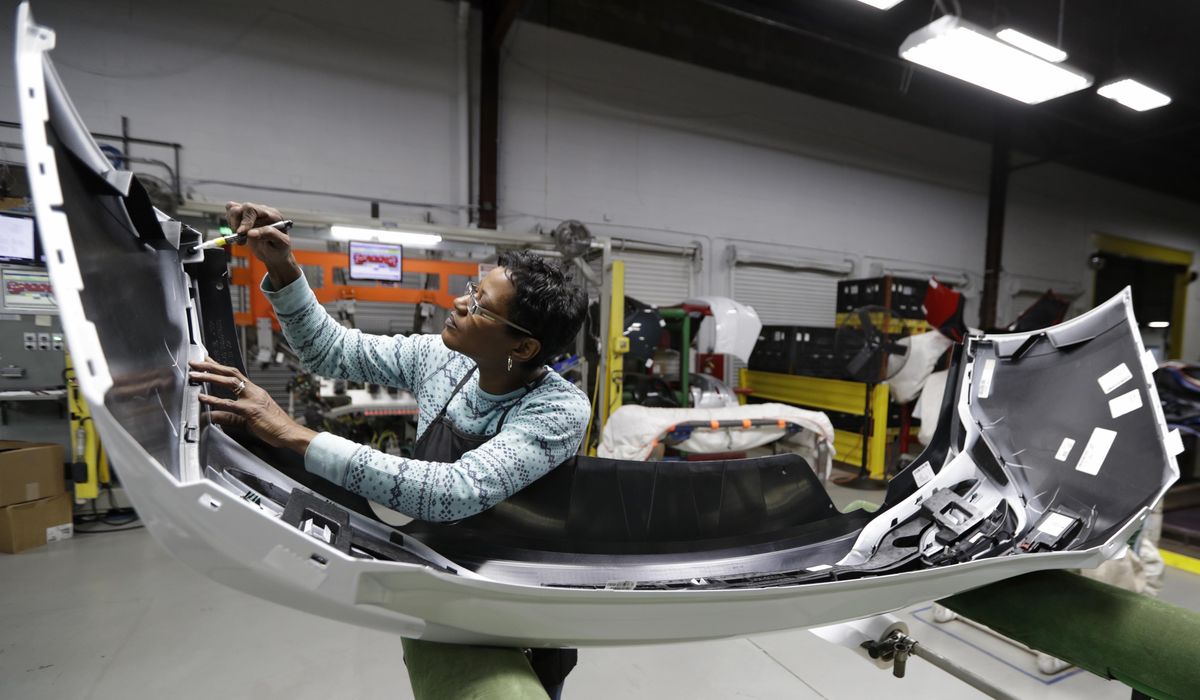


Among the few things Democrats and Republicans in Washington agree on is the need to buy American with taxpayers’ dollars.
But that consensus does not extend among economists, who say there are real costs to the idea.
Researchers say in a new paper that carrying out the new, stringent buy-American rules that former President Donald Trump and President Biden have pursued will cost the government up to $237,800 per job.
“When the federal government is forced by law to purchase relatively more expensive supplies from producers in the U.S., taxpayers end up paying more for the goods that the government buys,” said the researchers, led by economist Matilde Bombardini at the University of California, Berkeley.
They looked at current versions of buy-American policies and figured that they sustain about 100,000 extra jobs, at a cost of $132,300 per job.
Extrapolating forward to the new changes, the researchers figure the policies will create an additional 41,300 jobs in the economy — but at a cost of between $154,000 and $237,800 per slot.
Under current law “buy American” means that manufactured goods purchased by the government are supposed to be fabricated in the U.S. and at least 50% of the components were also produced here.
That will rise to 75% in 2029 and will expand the universe of sectors that must comply, thanks to changes Mr. Trump and Mr. Biden championed.
“The higher cost arises from two main factors: first, the newly protected sectors that compete with foreign intermediate inputs tend to have a lower labor share relative to sectors protected by final goods restrictions. Second, the regions most affected by the rise in input costs are those with a high concentration of government procurement, leading to increased public goods procurement costs,” the researchers said in a working paper published by the National Bureau of Economic Research.
The impetus to buy American dates back at least as far as the Boston Tea Party and continued after the Revolutionary War, when Americans cut back on British rum and started drinking domestically produced whiskey.
For the U.S. government, the first Buy American Act was enacted in 1933 amid the Great Depression, as lawmakers sought to bolster U.S. industry and lock in domestic supply lines for major projects such as the Hoover Dam.
In the 1980s and 1990s, “Buy American” was a response to growing manufacturing competition from Asian competitors. Congress responded with the Buy America Act of 1982 to further encourage federal purchasers to look for U.S. suppliers.
Mr. Trump continued the trend with a series of executive orders, and Mr. Biden signed an infrastructure law that required iron, steel and other construction materials to be sourced from the U.S.
The law included a waiver process, however, and Mr. Biden’s team has been generous in granting them.
A check of more than a half-dozen departments and agencies found no disapprovals as of early December.
Ms. Bombardini and her colleagues, in their new working paper, say the current version of Buy American policies doesn’t effectively target the sectors where restrictions would have the greatest impact.
• Stephen Dinan can be reached at sdinan@washingtontimes.com.
